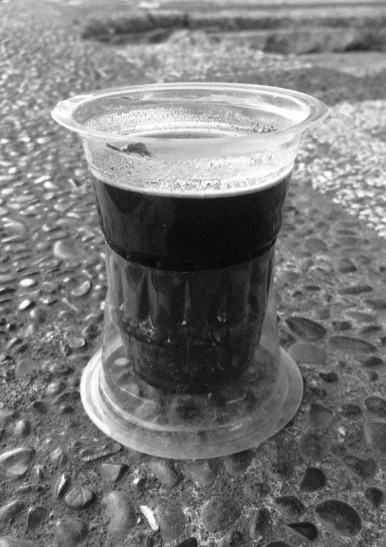Published on 31.12.2023
Muhammad Rifqi Fajri is an Indonesian product designer and design researcher whose works are positioned between (artistic) practice and theory, and involving experiments with making functional products, exploring materials as well as creating social interventions. In recent years, he has collaborated with ruruArtLab: an art laboratory of ruangrupa. Up until now, he works mainly on research and development within the Unconditional Design project, a design review that focuses on observing users’ tactics for making different functions of products or objects based on their own respective background.
Beginning with observations of behaviour in urban communities regarding the use of repurposed products in 2017, it sparked the idea to undertake research related to design, with Jakarta as its focal point. The observations involved visiting areas where people engage in their daily activities, such as traditional markets, densely populated neighbourhoods, and street food districts, to gain a genuine understanding of the creative concepts they employ to transform a specific design product into a new one with a different or enhanced function. This forms the foundation for the concept of “unconditional design,” which focuses on observing the phenomenon of repurposing design products.
Design is a process that has likely existed since the dawn of humanity on Earth, often overlooked and leading some to believe that the concept of product design or new planning strategies emerged only in modern times, constituting a part of modern life. The term “unconditional” signifies a state that does not necessitate specific conditions or limitations.
Unconditional design can be interpreted as “design without prerequisites” – it involves crafting products that have evolved beyond their original purpose due to the creative and intellectual processes of individuals re-evaluating a product’s utility. This subject is not widely discussed in academic or artistic design circles, as it is often deemed to lack established guidelines, specific references for methods, or a structured approach for studying such practices. Some may view it as relatively unimportant in the realm of design, or even as a whimsical endeavour. To date, it remains uncertain when humans began repurposing products once their primary functions became obsolete or when they started repurposing entirely new products according to their needs, influenced and driven by various situational and contextual factors.
The process of transformation is greatly influenced by creativity, experiences, culture, needs, social factors, economic conditions, and the environment in which people reside (related to ethnology). This is what leads to variations in the manifestation of repurposing; in other words, design techniques for a particular design product can vary from one region to another.
A new design product that arises from the creative process carried out by the community without specific design knowledge or education has resulted in additional functions or derivatives of the designed product. This activity is often referred to as “akal-akalan warga”. Starting from 2017, within ruangrupa’s ARTLAB division, I’ve been utilising the Instagram social media platform (@unconditionaldesign) as a channel for gathering input on a broader range of new design products with a more extensive regional reach. The feedback received comes in the form of photos and videos sent by individuals (contributors) residing in different parts of Indonesia. Subsequently, these submissions are analysed and shared through Instagram posts, complete with descriptions and relevant location information. After obtaining the photos, a process of organisation and classification is conducted to gain a comprehensive understanding of the factors contributing to the emergence of new design products.
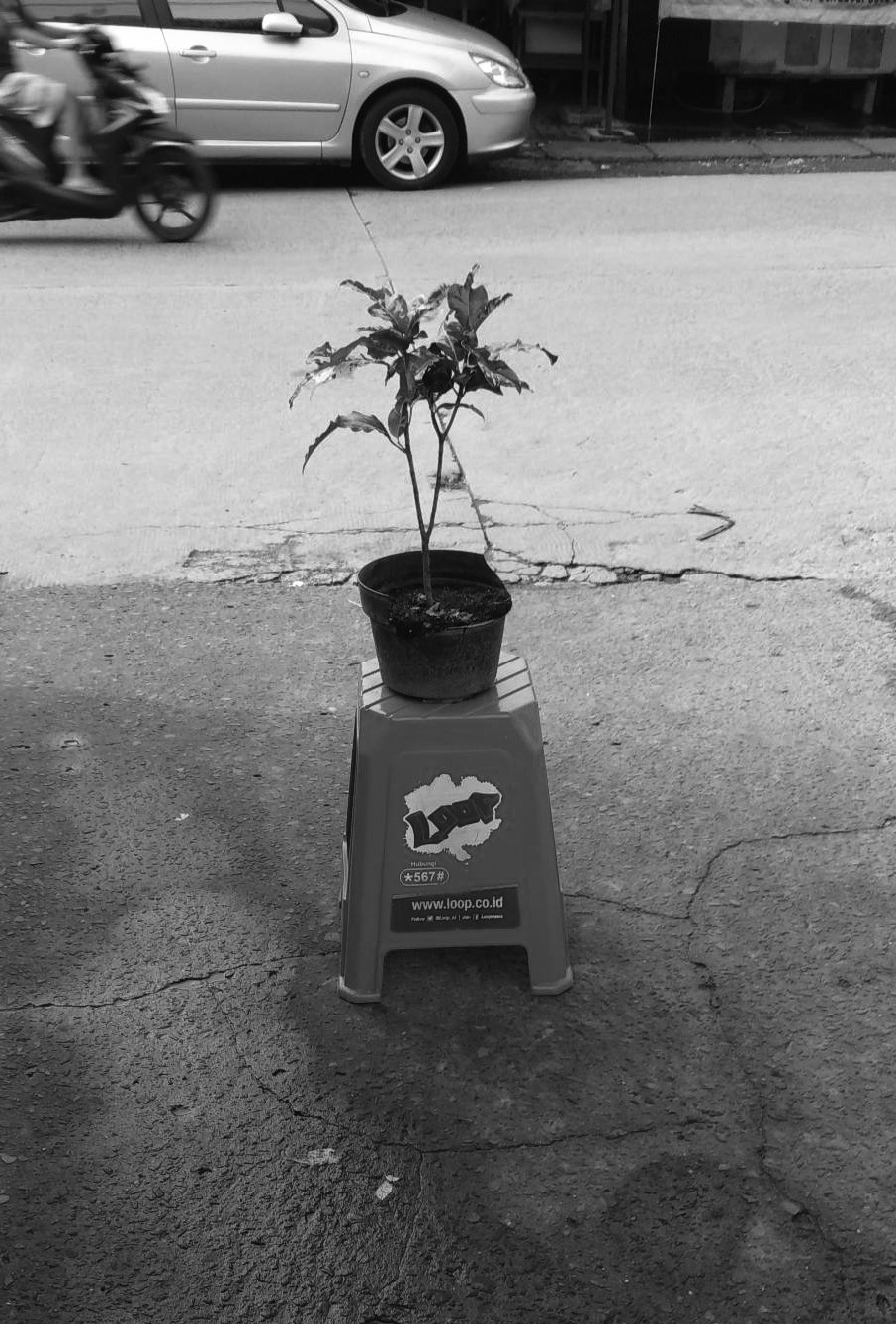
Encounters with “people’s tricks” happened at the start of this attention-grabbing research, so much so that one of the photos became the logo for this unconditional design research project (see Figure 1). Usually, when passing through an alley that divides an area, or functions as a shortcut, we see a plastic bench with a potted plant placed on it, placed in the middle of the road under the entrance gate of the alley. It looks so striking and has a meaning that is quite understandable for local residents or those who are accustomed to passing through the lane (alley). The simple design functions to indicate that the road cannot be accessed by cars or large vehicles, and only two-wheeled vehicles or pedestrians can pass. Sometimes, residents also interpret it as a sign that the Night Market was taking place in the area. On the other hand, people are also accustomed to making a marker using some item of furniture placed in the middle of the road with the meaning that the road is impassable because it is damaged, an event is taking place, or road repairs are being carried out.
The term “akal-akalan warga,” derived from the word “akal,” which encompasses the ability to comprehend, devise approaches, exert effort, display ingenuity, and perceive and understand the environment, is a fitting expression to describe the citizen practices or unconditional design phenomenon prevalent in Indonesia. This term ‘akal-akalan warga’ is also employed as a hashtag on Instagram (#akalakalanwarga) to facilitate the gathering of photos or videos previously shared on contributors’ Instagram accounts. This represents a means of advancing the research by incorporating these posted outcomes in the unconditional design Instagram account.
Through the diverse contributions shared on Instagram by various individuals and the insights gathered from observing the surrounding environment and exploring Instagram hashtags, a process of categorisation is undertaken, focusing on the context of the resulting designs. The transformation of objects, the incorporation or fusion of two objects for a single purpose, and the introduction of multiple derivative functions are achieved through several methods, including altering the original shape, adhering, binding, and arranging specific items using random design approaches. On occasion, certain products may also spontaneously acquire additional functions.
SOME EXAMPLES
The results of the residents’ creativity in choosing certain objects or materials as design materials, and then designing or converting these objects or materials to produce a tool or system facilitates users or participants, either collectively or individually. Consciously or unconsciously, residents carry out this practice because of the pressure of conditions or situations that cause them to make “akal-akalan”. Apart from a knowledge of product design, this culture of resourcefulness has often been carried out with several categorisations based on the placement of its use, whether used in transportation, public facilities, homes, tools or components of trade, agriculture, animal husbandry, or based on the need to solve problems faced in everyday life.
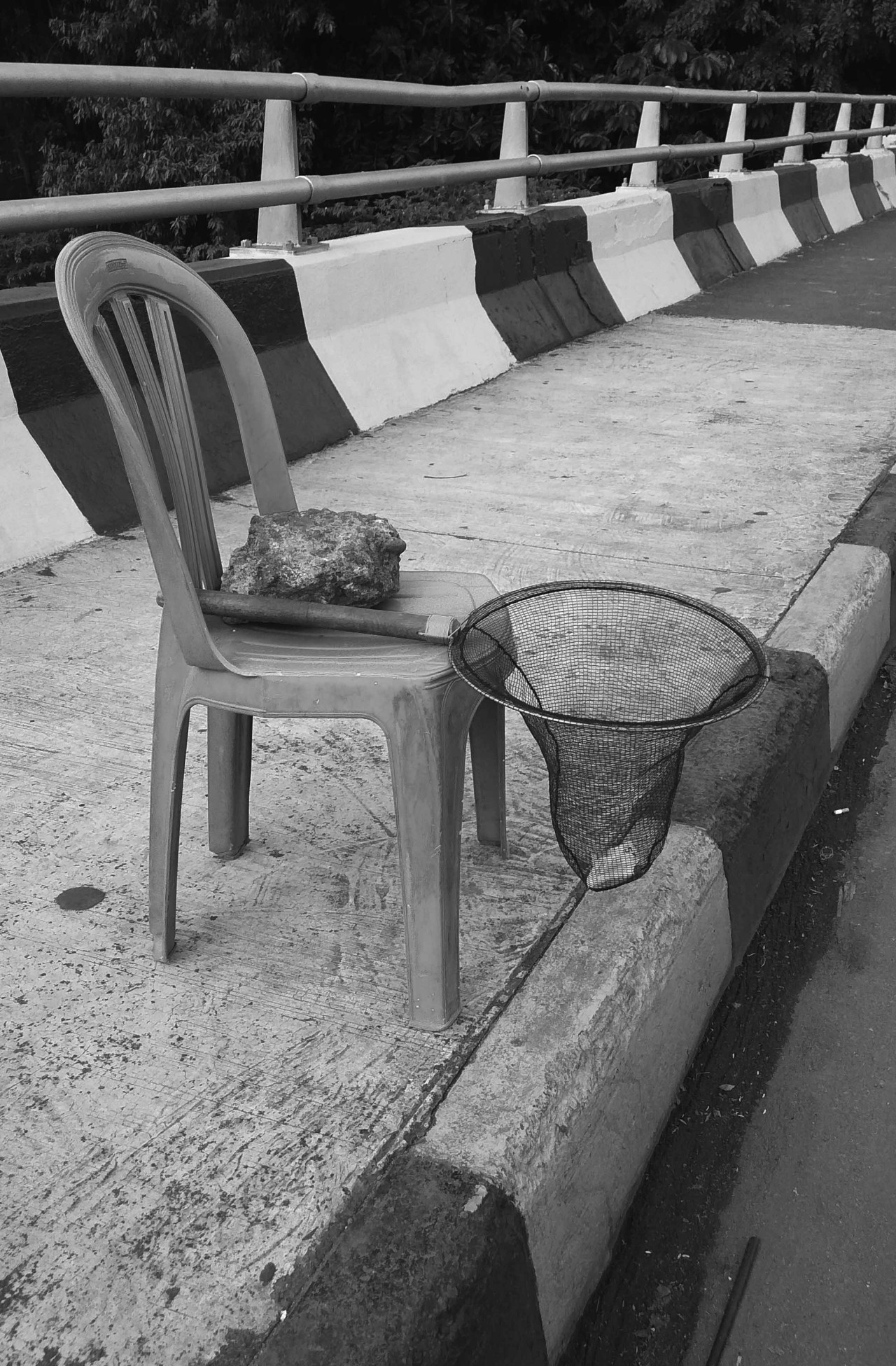
Figure 2 shows a chair placed on the side of the road fitted with a net for catching fish positioned towards the road and a stone as a weight to keep it secure. This chair functions as a tool to collect donations from residents who cross the road. With this function, people no longer need to wait while sitting or standing near the donation chair, but only need to check the filter on the donation chair when the money has been collected in it.
In another example, a fork has been deliberately damaged and its shape changed to suit a specific new function as a tool for simultaneously holding and cutting, where its use is combined with a knife to cut siomay, an Indonesian fish dumpling, into pieces (see Figure 3).

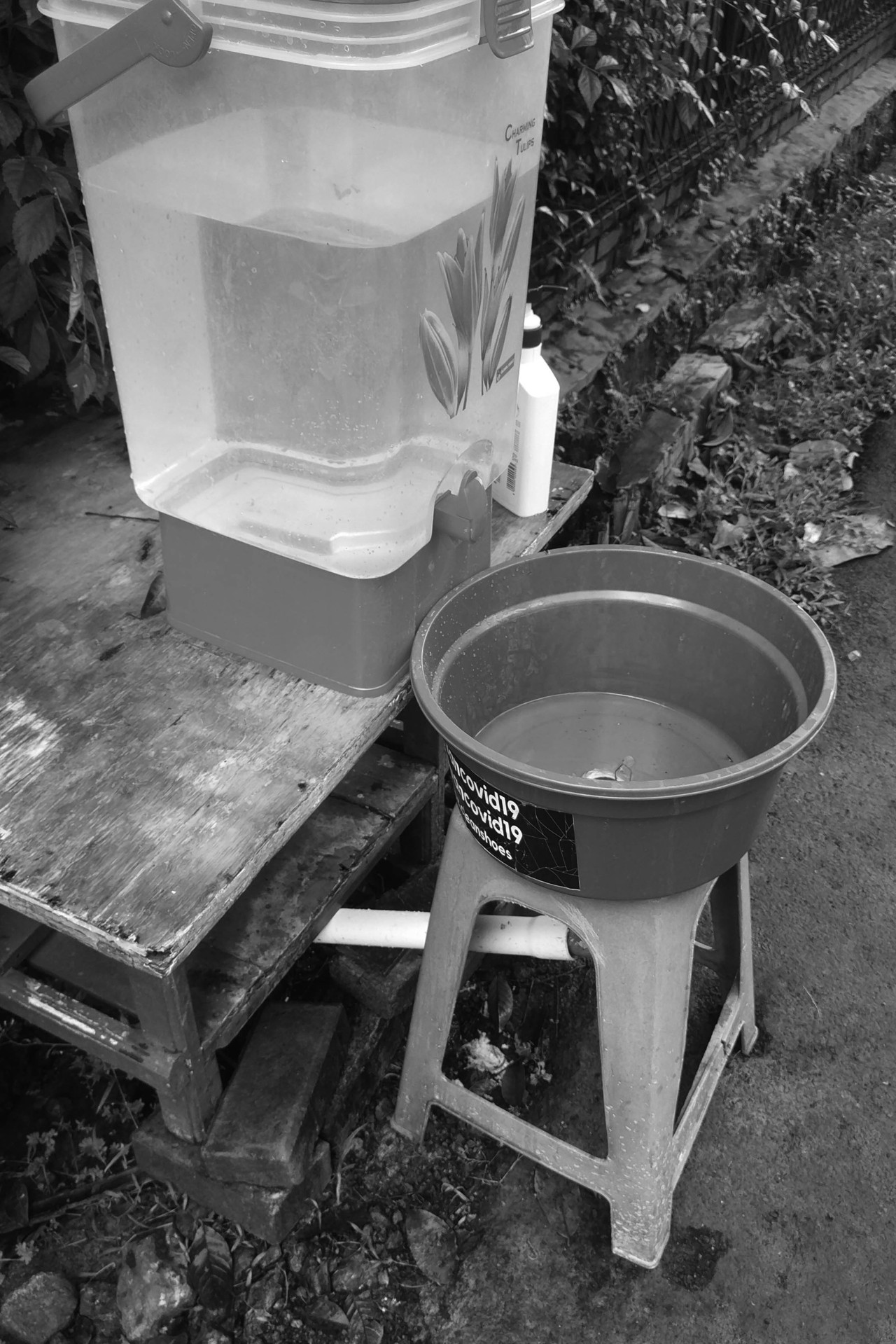
During the pandemic, the emphasis on hygiene and health protocols became a significant aspect, both in residential areas and within people’s homes. It is quite common to observe the placement of a washbasin in front of houses, serving as an essential facility to uphold these health measures. However, many individuals have also innovated handwashing sinks or facilities using a diverse range of objects and materials. This encompasses alterations to the typical sink design, attaching water containers intentionally to faucets, incorporating drinking water dispensers, and even collaborative efforts by residents to establish communal washing stations in residential neighbourhoods. Following the conclusion of the pandemic, these sinks have continued to be utilised, transitioning from residential areas to dining establishments, often also undergoing various modifications.
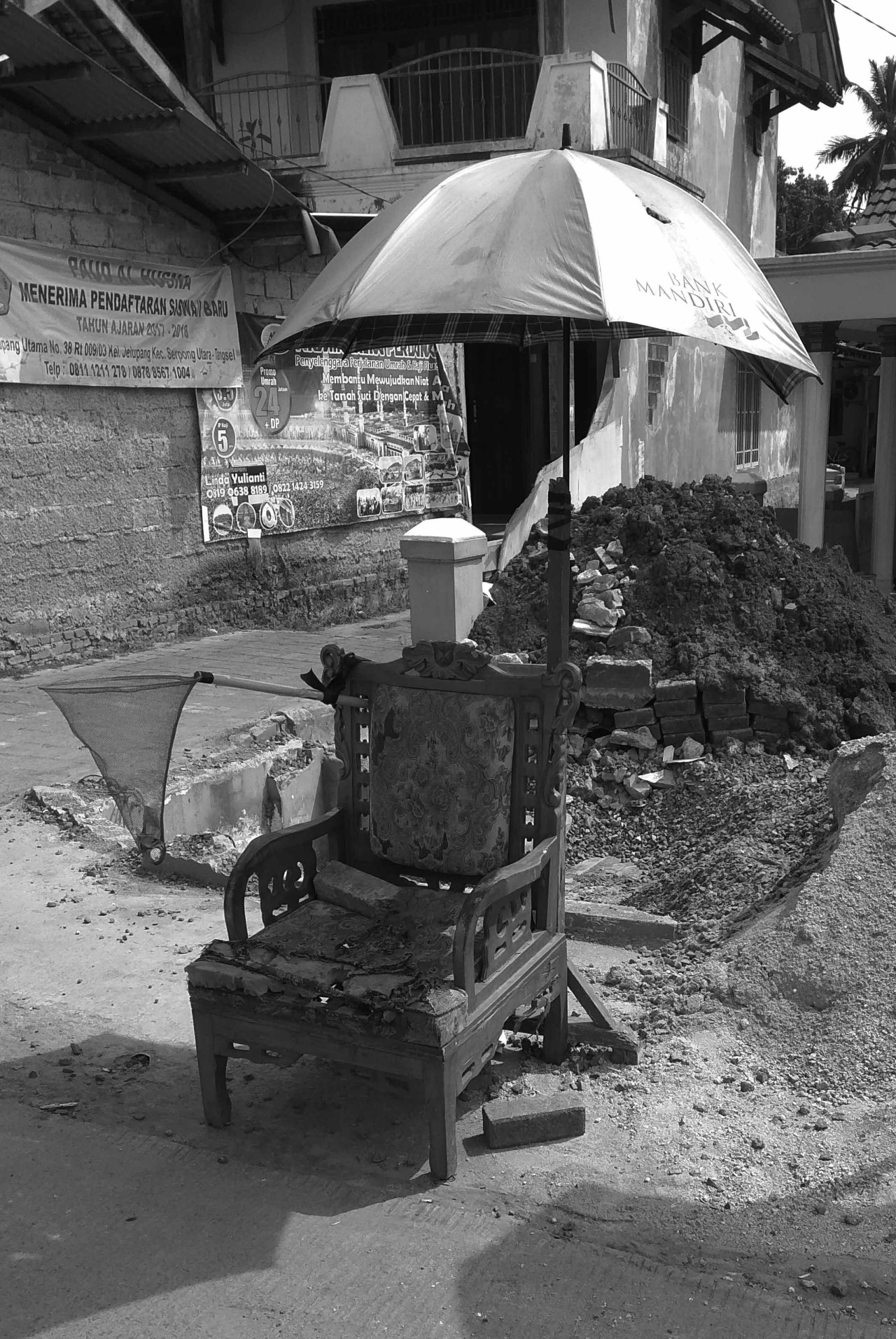

In the course of researching the “akal-akalan warga” occurring on the roadside, several designs by citizens were observed that deliberately designed a new product using furniture as the basic element combined with makeshift materials and tools to create a new function; for example, the chair used as a tool for seeking donations or a chair used as a mobile phone rest when gathering to watch live broadcasts of football matches in a hangout. From the actions of citizens who have relied on their wits in dealing with various life problems, they always have certain ways or methods as anticipatory steps in overcoming these problems. Starting with the selection of materials and predicting their resilience considering the weather conditions, and selecting the shape of the product to be designed, and anticipating the insects that might eat the material, one of the ways used to protect furniture from insects is to use plastic beverage bottles or used oil bottles, which are attached to each table leg.
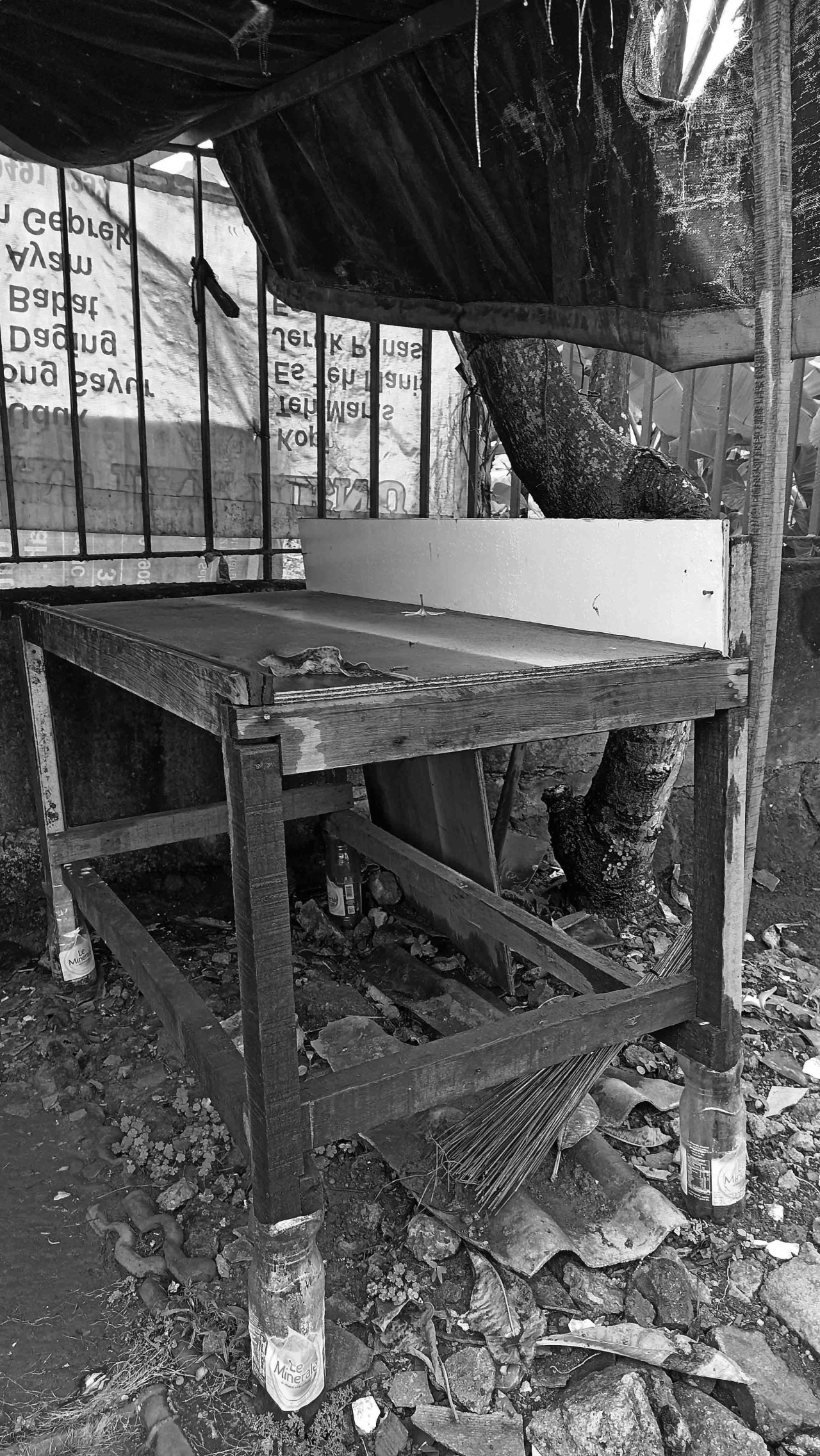
From some of these examples, residents often provide knowledge verbally or through speech; however, they often also give examples such as the dissemination of practices that have been successful or proven to function in their daily lives. People also not only develop thinking methods but also practise them directly with what they need. The thinking process in the practice of “akal-akalan warga” involves a wide variety of knowledge randomly scattered among the residents regarding the nature of objects, the relationship between objects and humans, the identification of the problems they face, the astuteness and ability to see opportunities and/or problems, as well as the sensitivity to find a solution. This involves experience, the pressure of situations and conditions, the flexibility of humans so that habits can be easily adapted to the environment or the availability of objects and tools, or the complexities they face.
Therefore, the research journey continues to explore what citizens in Indonesia have been doing in terms of the “akal-akalan warga” practice with various observations still scattered in several cities, especially urban areas and suburbs that provide inspiration for designers, or other multidisciplinary fields. The study of “akal-akalan warga” can provide valuable insights into the ways individuals adapt to and solve problems in their neighbourhoods, which in turn can inform designers and other experts in their respective fields. This research can contribute to a better understanding of local knowledge and practices, which can lead to innovative solutions and improvements in various fields.
